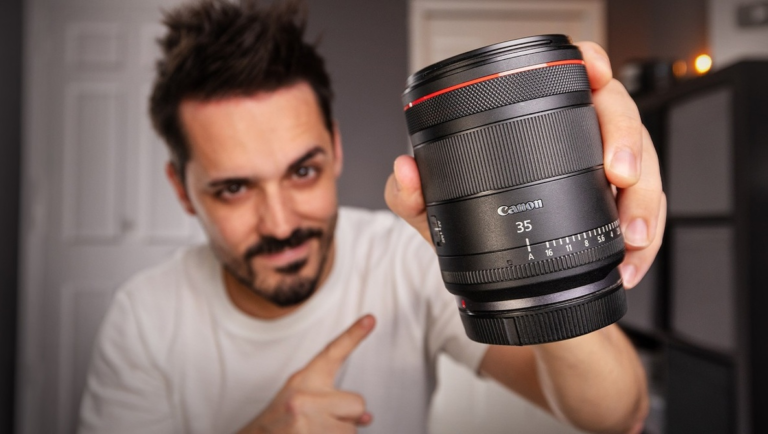The Canon RF 35mm f/1.4 L VCM promises sharpness, speed, and versatility, making it a compelling option for a variety of shooting scenarios. Whether you’re into video or photography, it’s a lens worth a look.
Coming to you from Anthony Gugliotta, this detailed video gives an honest look at the Canon RF 35mm f/1.4 L VCM. The lens has a lot going for it: it’s Canon’s sharpest 35mm yet, with a wide f/1.4 aperture that allows for excellent low-light performance and shallow depth of field. However, it’s not without its quirks. One of the most talked-about features is the floating element inside, which creates a noticeable movement if you shake the lens. Gugliotta mentions that while this might seem distracting, it doesn’t affect typical usage. The lens also has some distortion and vignetting, but he argues that these are minor issues for most situations and can be corrected in post-processing.
The video also touches on how the RF 35mm f/1.4 compares to its smaller sibling, the RF 35mm f/1.8 STM. The larger lens is sharper, but it comes at three times the cost, raising the question of whether the slight increase in image quality justifies the price. Gugliotta dives into practical examples, pointing out that the f/1.4 lens’ autofocus is significantly faster, making it a better choice for video shooters who need smooth and responsive focusing. But if close-up, macro-like shots are a priority, the f/1.8 might still have the edge with its closer focusing distance.
Gugliotta discusses the strengths of the RF 35mm f/1.4 in low-light situations, showing examples from blue hour portraits and nighttime street scenes. He highlights that while the f/1.4 aperture offers clear benefits in terms of gathering light, using distortion and vignetting corrections can sometimes introduce noise in the corners of images, especially when shooting at higher ISO settings. This becomes particularly noticeable in astrophotography or other scenarios where the lens’ maximum aperture is pushed to its limits.
If you’re considering this lens, pay attention to how it fits within your existing gear lineup. Gugliotta mentions that he often carries a 15-35mm f/2.8, which overlaps slightly with the 35mm focal length. This makes choosing between the two a matter of weighing the need for a wider aperture against the convenience of not switching lenses. Ultimately, the RF 35mm f/1.4 L VCM shines when you need that extra light and fast autofocus or if you’re doing a lot of video work, but you might find the RF 35mm f/1.8 or even a zoom lens more versatile depending on your style. Check out the video above for the full rundown from Gugliotta.
